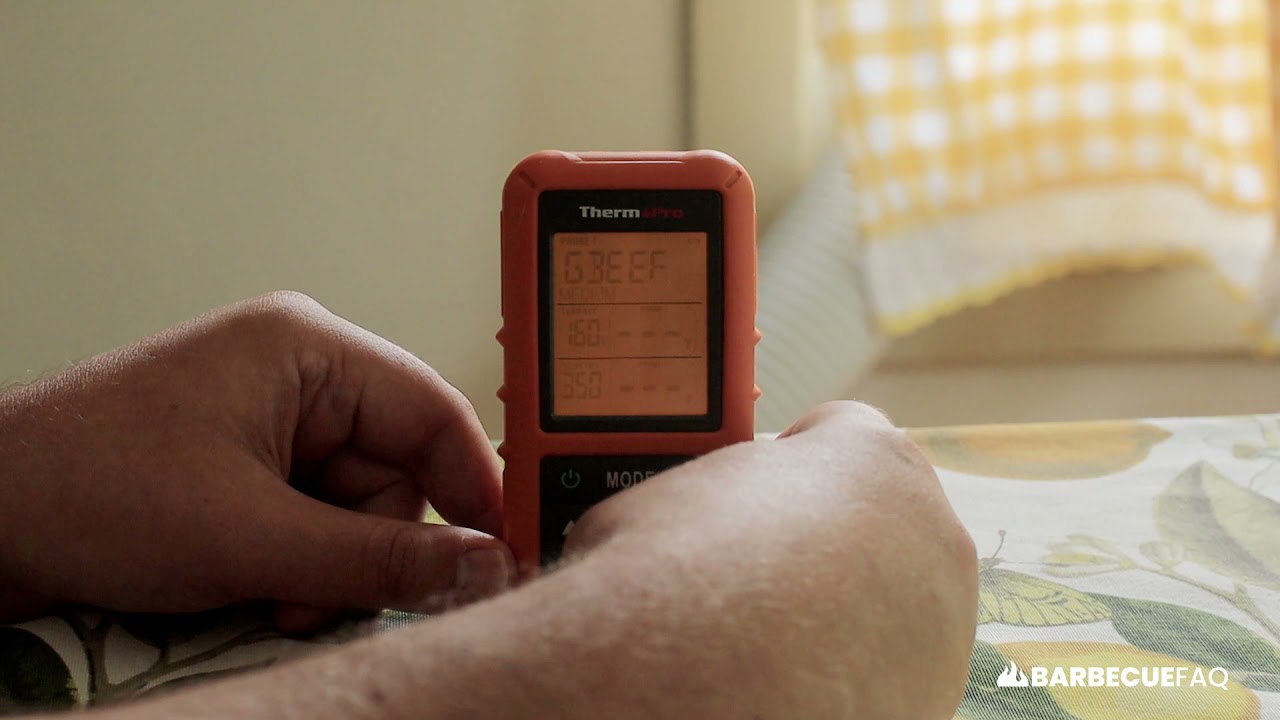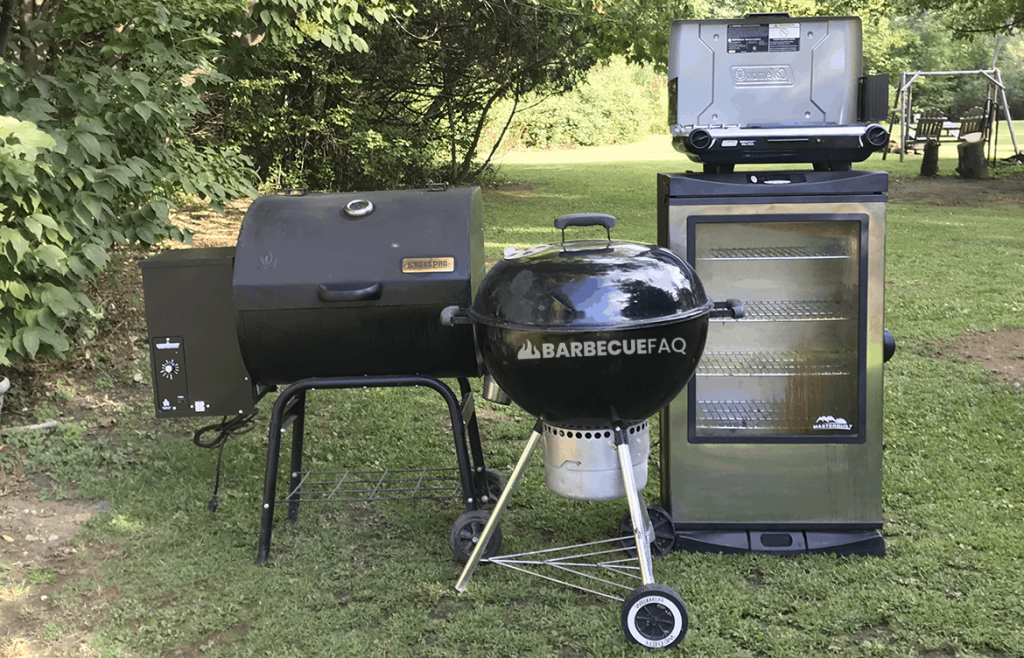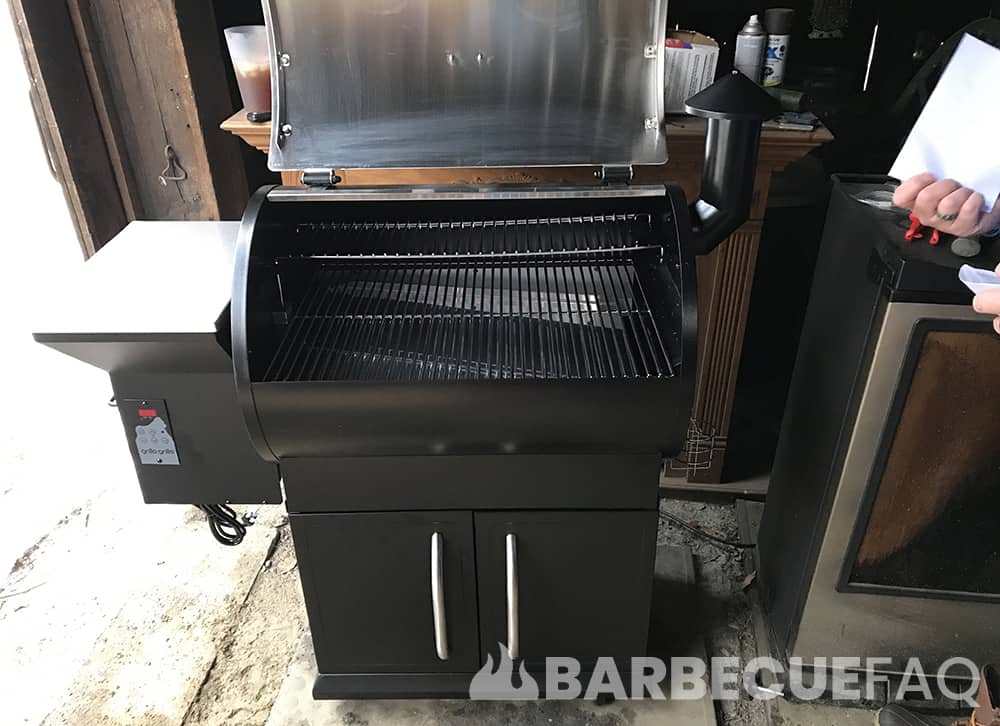Original Date of Review: July 1st, 2021.
Update 12/17/2023: Device was accidentally submerged in water and no longer works. Originally purchased January 2021 and lasted 1,076 days.
For the money, it’s one the better leave-in probe thermometers you can buy.
If All You Need are Probe Thermometers to Know the Internal Temperature of Your Food, Buy It
Of the options on the market, the TP20 is probably the most affordable with the longest range, with accurate probes.
Even checking what’s available right now with the same features, nothing really competes.
I Don’t Like Leave-in or Bluetooth Devices
I’ve tried a bunch of these and to be honest, most suck.
The only one I like somewhat is the Combustion inc.
But even still – the battery life sucks and the range leaves little to be desired for me.
ThermoPro TP20: What I Like
Overall, the functionality is intuitive.
The TP20 is pre-programmed for different types of meat as well as doneness temperatures. These values are based on the USDA approved temperatures.
To illustrate, ground beef is 160F, and a Medium-rare steak is 140 F.
In order to program these values it’s as easy as pressing the meat button and then the “taste” button for doneness temperatures (where appropriate) – Listed as Rare, Medium Rare, Medium, Medium Well, and Well done.
If you prefer to use a timer instead (both countdown and count-up) that’s also possible. The timer can also run simultaneously with the programmed temperature alarms. The time can be set up to 99 hours and 59 minutes.
The temperature display on the transmitter will toggle between probe 1 and probe 2, where-as the receiver displays both probe temperatures.
The remote range is rated up to 300 ft, which is fairly accurate. For reference, a football field is 360 ft.
The receiver and transmitter communicate via RF signals using a proprietary protocol (not WiFi or Bluetooth). This is especially useful for when the weather is poor and you’d rather be indoors. I live in a two story home and have my smoker/grills in my barn – I’m able to sit in my office on the second floor and still receive temperature updates.
Another useful feature is the alarm when communication is lost between the transmitter and receiver. After 4 minutes the receiver’s alarm will go off. The receiver will also auto-shut off after 30 minutes of not receiving a signal.
If you’re a BBQ competitor or someone who is smoking meat like brisket over-night, the LCD display is backlit at the push of a button.
I’m from the United States and our unit of measurement for temperature is Fahrenheit, however, if you prefer Celsius you can also change that too.
There are two probes and two terminals (probe 1 and probe 2). The probes are rated between 32 F to 572 F (0 to 300 C). They are rated to an accuracy of +/- 1.8 F, and are made of food-grade stainless steel. The wire itself is also rated to 716 F.
While there is only one color-way available (orange) the case is rugged and appears to be designed for drop resistance. I can attest to this as the number of times I’ve dropped both the receiver and transmitter is too many times to count and they both still function perfectly.
ThermoPro TP20: What I Don’t Like
While there are a number of things to like, there are a few things I’m not a fan of.
While the alarm is super useful for knowing when your desired temperature has been reached, pushing any button on the TP20 creates a beep noise as a form of feedback to the user.
While the beeps don’t affect functionality and the number of times you have to press a button is minimal, being able to mute this form of feedback would be great.
To Illustrate, here’s a video of me cycling through the types of meat, taste, Fahrenheit to Celsius, turning the backlit display off, and then shutting the device off – All of which have a beep as feedback.
The clip on the transmitter is pretty lackluster. Namely because of the angle it sits at. Meaning if you’re planning to stand it up, I wish you luck; I have a nail in my barn I hang mine from. This could also be easily fastened/clipped to most grills.
While the length of the probes is adequate enough (40″ or 3.33 ft.) on some larger offset smokers this could prove inadequate. Especially if you’re having to contort the probes in such a way to reach two food items.
Testing the Accuracy of the ThermoPro TP20: More than a Year Later
A big issue that a number of reviewers note are “bad” probes.
While this is certainly possible due to engineering defects, I did not have this experience.
Note: All of the reviewers who said they got bad probes noted that ThermoPro was more than willing to send them replacement probes and worked to rectify the issue, which is great to see.
They also have a lifetime warranty on their probes.
I bought the ThermoPro TP20 on January 5, 2020.
The following photographs were taken on June 30th, 2021.

In order to test the accuracy of probes, it’s recommended to use an ice bath and to test the tip temperature. In a number of photos I saw from reviewers they took their measurement, what appeared to be, incorrectly.
Note: The reason an ice bath is used for testing temperature is because it is a known value – water freezes at 32 F.
Rather than lifting the probes and taking the temperature of the water itself, they submerged the probe so that the tip touched the bottom of the cup/container.
Testing in that way is inherently flawed as it also takes into account the surface temperature radiating into the cup. This is the reason condensation occurs on the surface where the cup sits.

When I tested in this way, my temperatures were off by as much as 10 F on both probes. However, when the probes are lifted and the tip is in the center of the bath, accuracy of the probes fall within the range specified by ThermoPro (+/- 1.8 F).
From the photos we can see my probes measured within the range of +/- 1.8 F. The ice water bath is 32 F, the probes tested 33 and 34 F respectively.
Should You Buy the ThermoPro TP20?
So if you’re on a budget and looking for a probe thermometer that can measure the internal temperature of your food – the ThermoPro TP20 is likely the best option available.
Year after year I’ve yet to see a product take its place.
- It’s affordable but lasts for a quite a while (mine lasted 3 years).
- The probes are accurate – and they have a lifetime warranty on their probes.
- The range is good enough – if you’re someone who needs to be miles away, it’s inadequate.
- You can measure two temperatures – so you could monitor the meat and the temperature of your smoker.
Likely I’ll buy another ThermoPro TP20 in the near future – it simply works.





